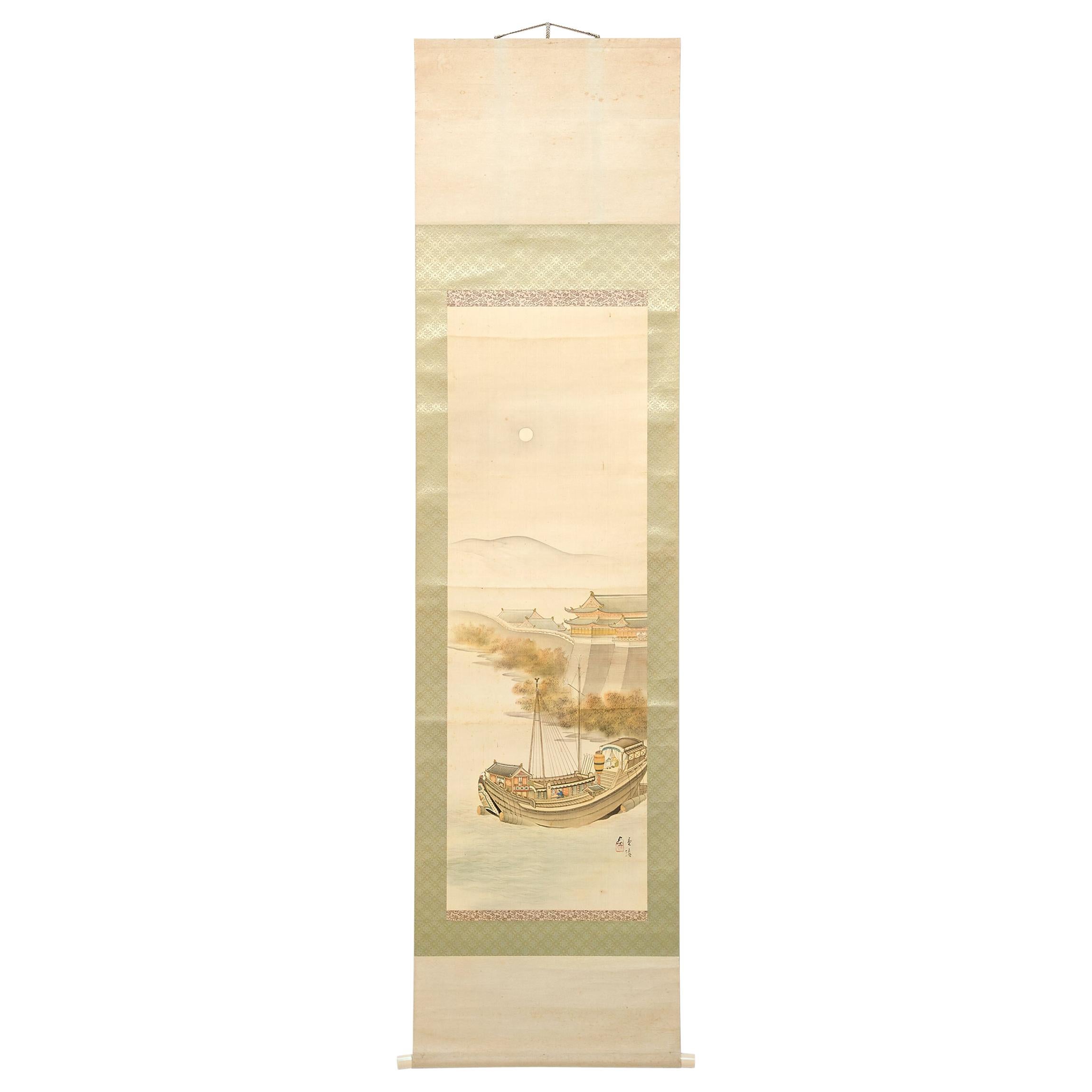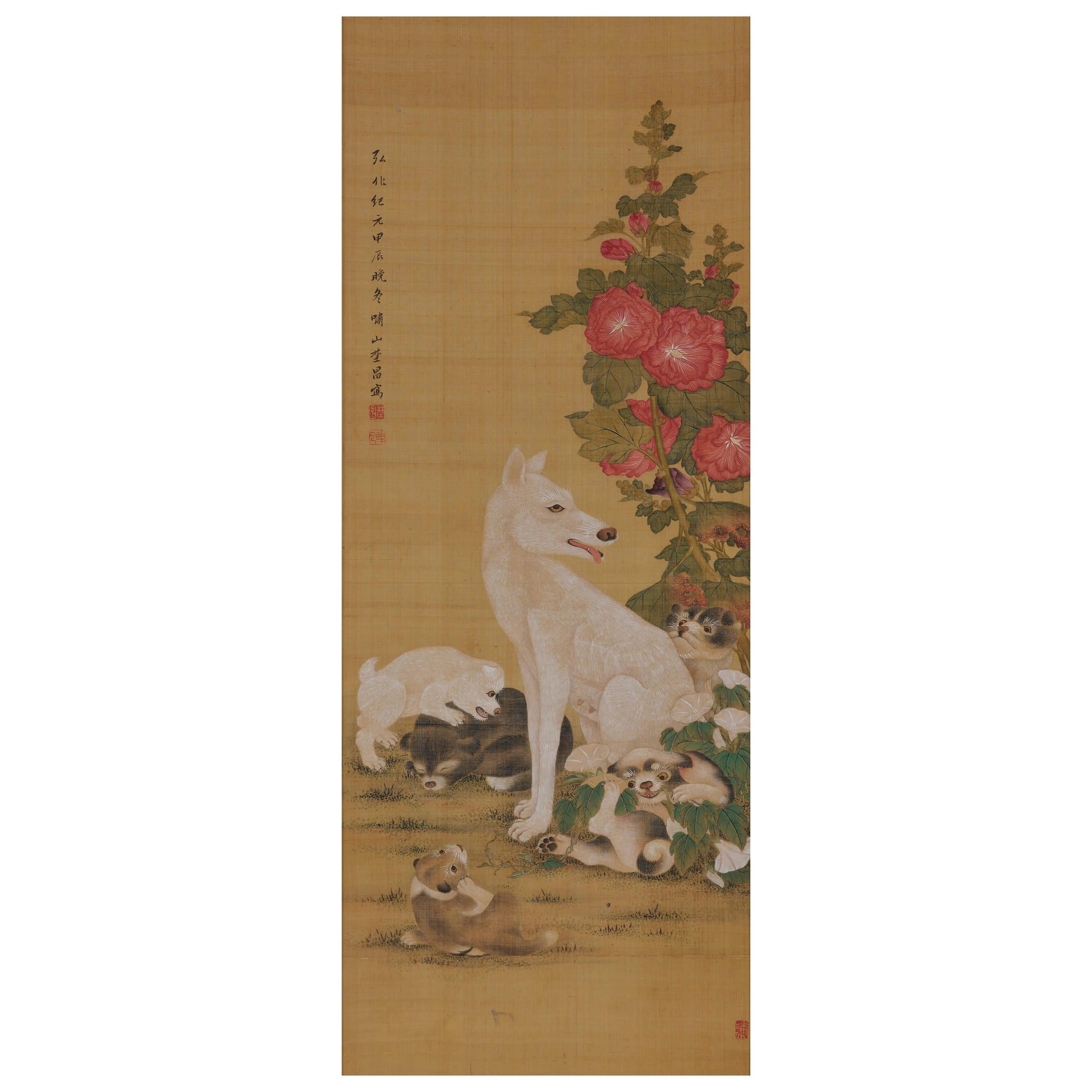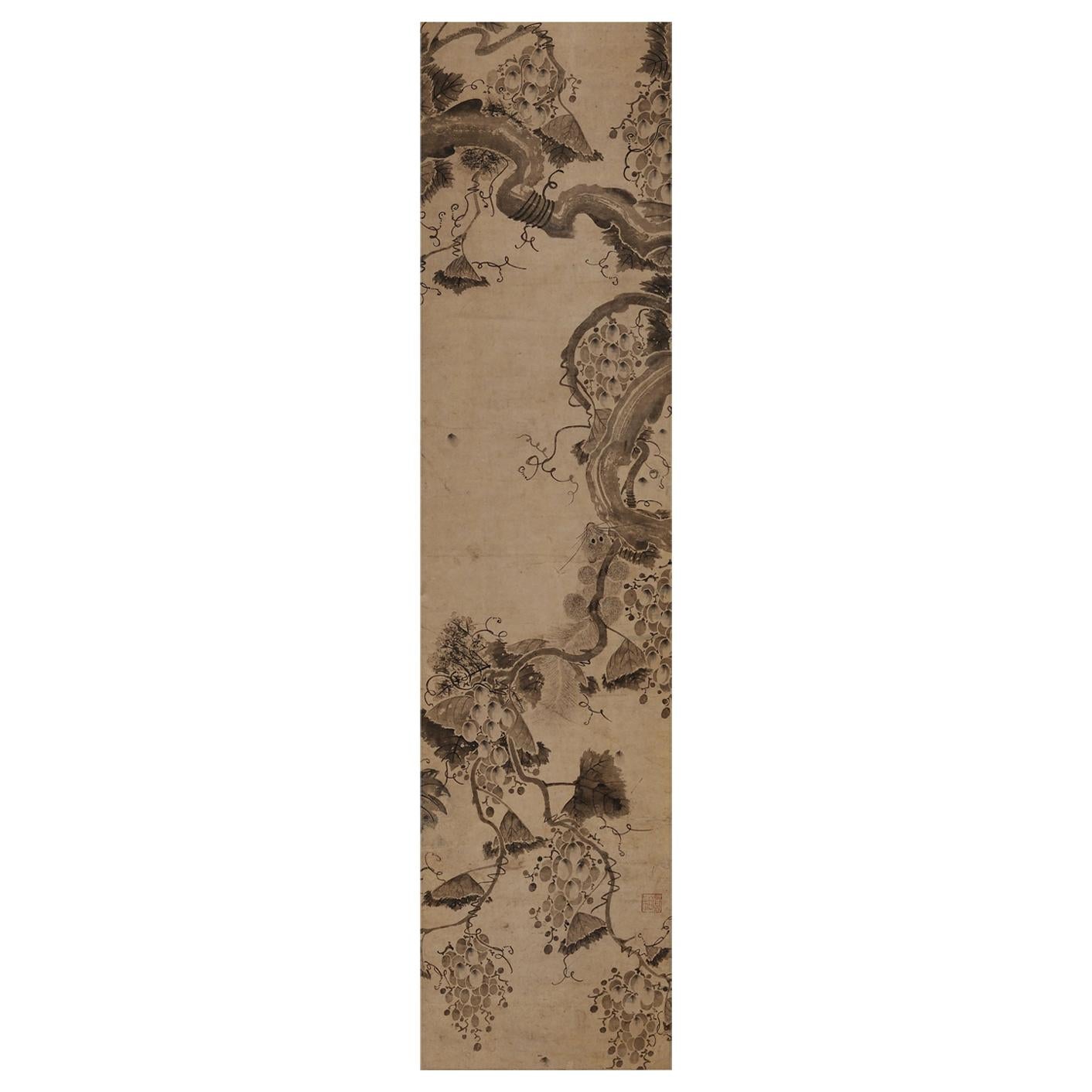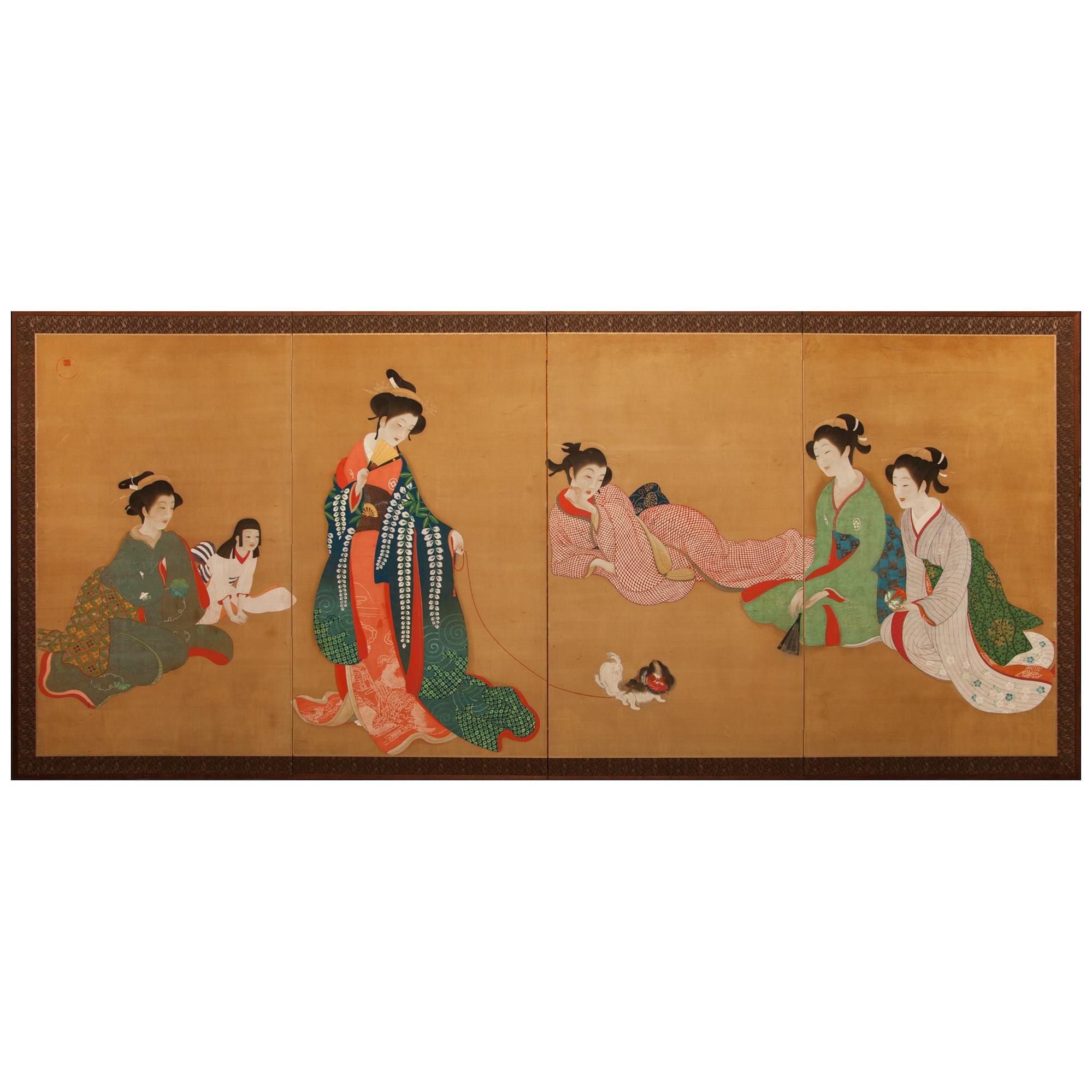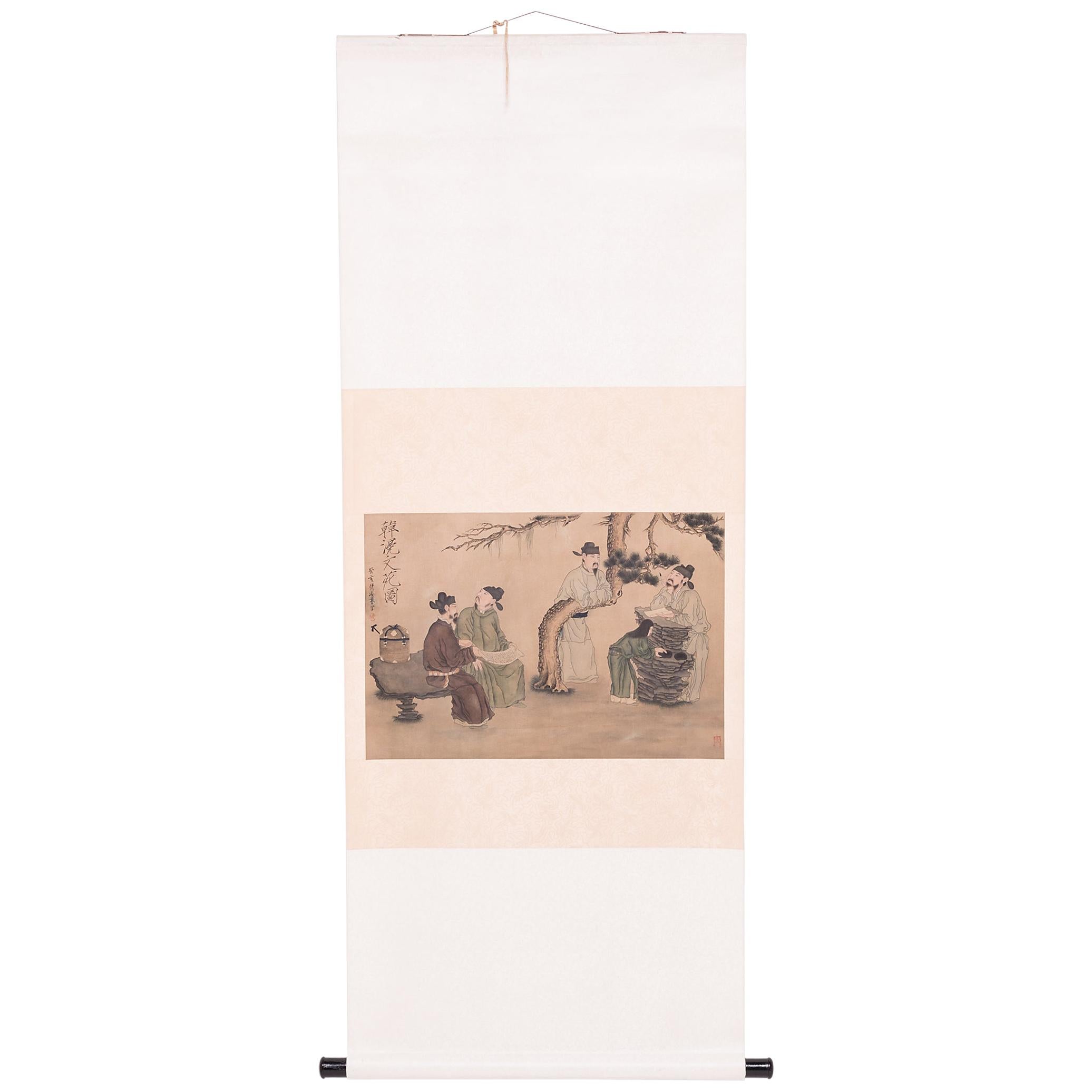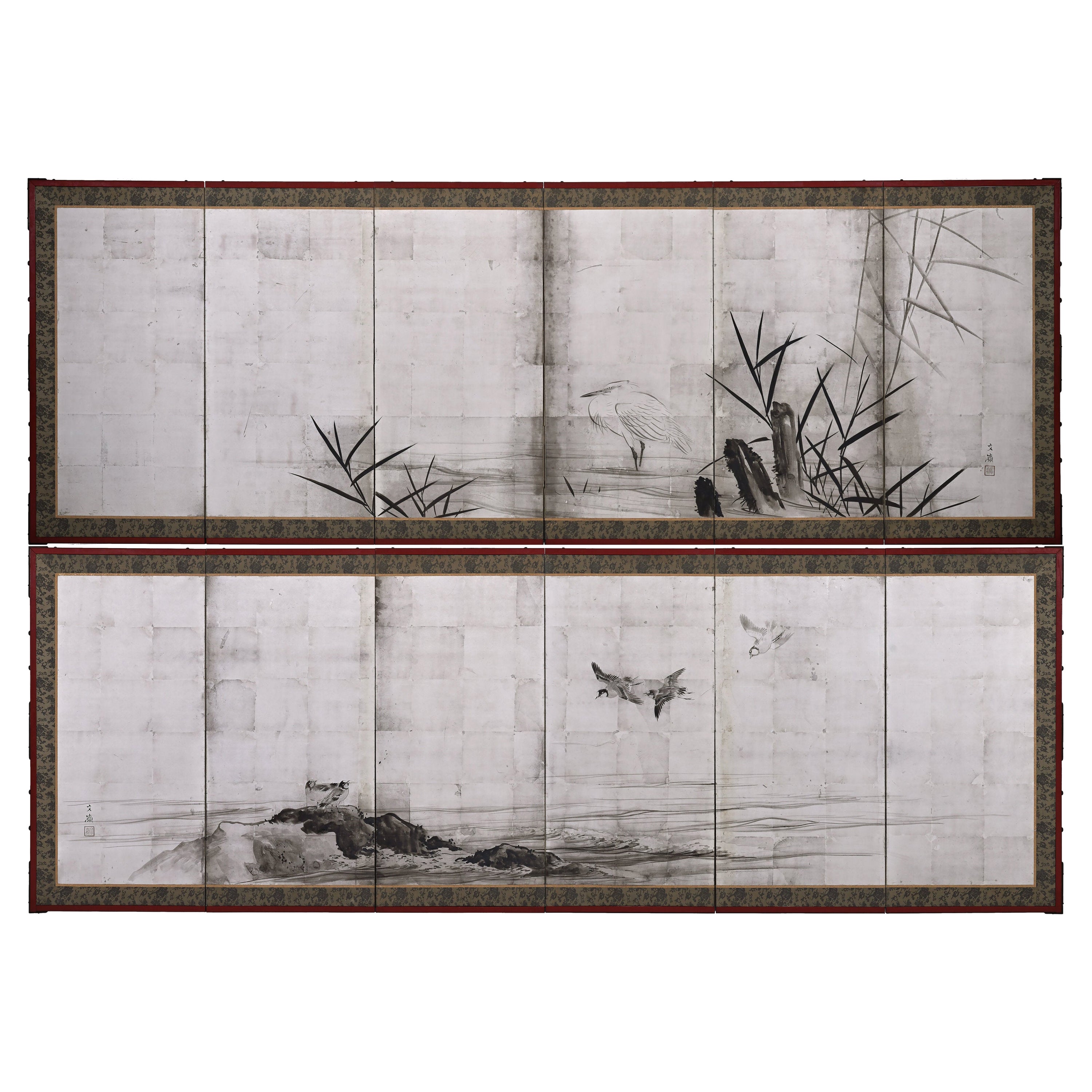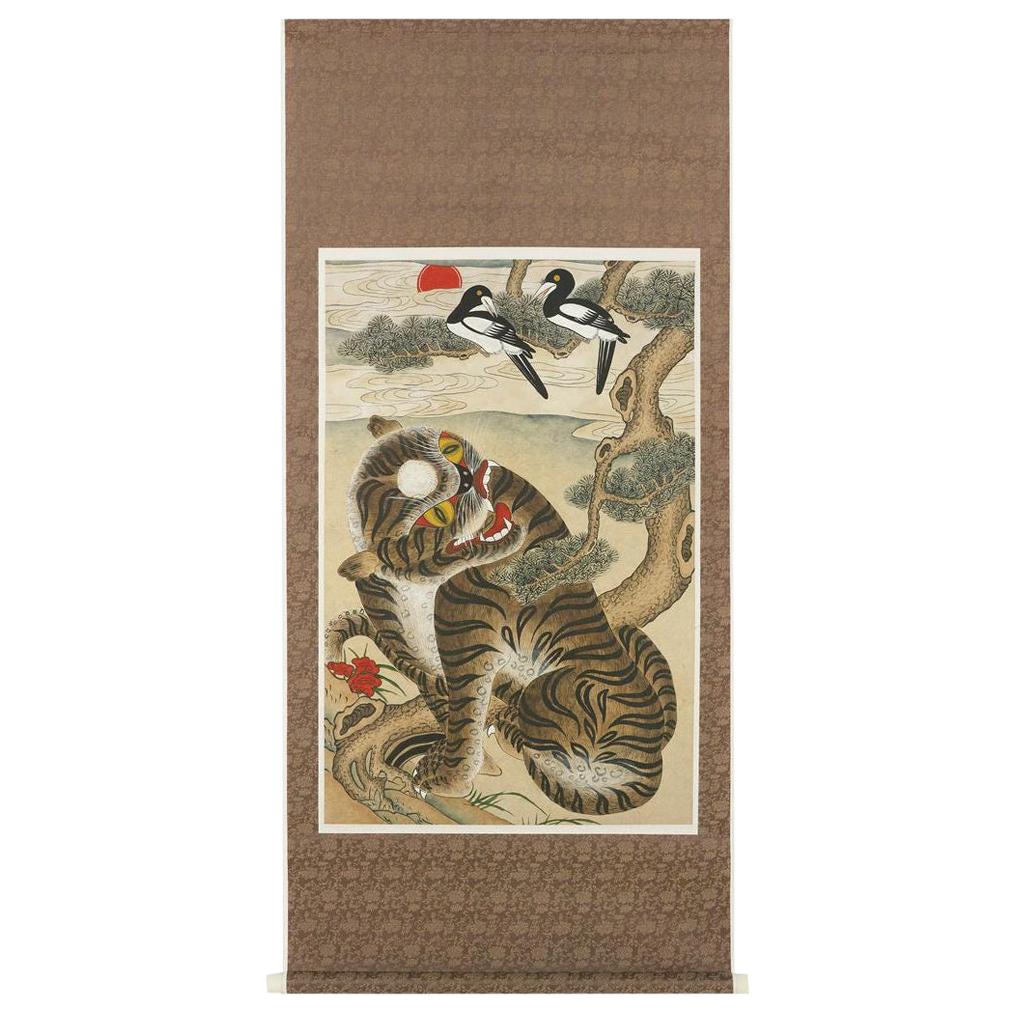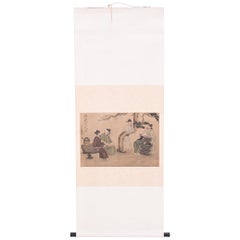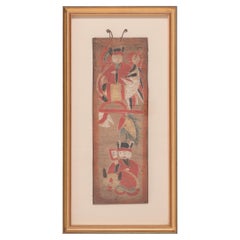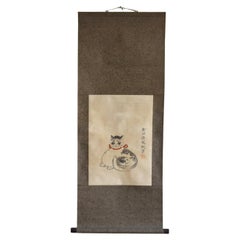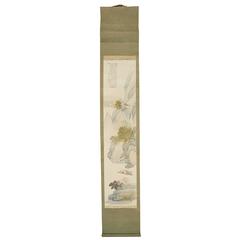
"Springtime on the River" Meiji Period Scroll Painting
View Similar Items
Want more images or videos?
Request additional images or videos from the seller
1 of 5
"Springtime on the River" Meiji Period Scroll Painting
About the Item
- Dimensions:Height: 76 in (193.04 cm)Width: 12.75 in (32.39 cm)Depth: 0.5 in (1.27 cm)
- Materials and Techniques:
- Place of Origin:
- Period:
- Date of Manufacture:1900
- Condition:Wear consistent with age and use.
- Seller Location:Chicago, IL
- Reference Number:Seller: CMKH0081stDibs: LU82007505123

About the Seller
4.9
PAGODA RED is a renowned resource for designers as well as collectors of contemporary and ancient Chinese, Korean and Japanese art. They offer a curated edit of fine and provincial furniture, ceramics, scholars' objects, and paintings and textiles, each piece historically and geographically authentic.
Diamond Seller
These expertly vetted sellers are 1stDibs' most experienced sellers and are rated highest by our customers.
Established in 1997
1stDibs seller since 2006
1,412 sales on 1stDibs
Typical response time: 1 hour
More From This SellerView All
- Japanese Meiji Riverside Scroll Painting, c. 1900Located in Chicago, ILAlthough western painting was initially embraced during Japan’s Meiji period (1868-1912), artists brought on a revival of traditional painting styles as they sought to create a modern Japanese style with roots in the past. This exquisite hanging scroll demonstrates the preference for soft layering of gray tones with judicious use of color. The landscape is rendered in soft ink washes that subtly distinguish between water, mountain, and sky. The scroll painting...Category
Early 20th Century Japanese Meiji Paintings and Screens
MaterialsPaper
- "Literary Gathering" Chinese Scroll Painting, c. 1923Located in Chicago, ILExquisitely painted with delicate line work and a subdued color palette, this Chinese scroll painting is an Late 20th-century reproduction of a...Category
Late 20th Century Chinese Paintings and Screens
MaterialsSilk, Paper
- Taoist Ceremonial Scroll Painting, circa 1870Located in Chicago, ILThis colorful painted scroll is a Taoist ceremonial painting attributed to the Yao or Mien minority culture of southern China, northern Vietnam and other neighboring regions. The sma...Category
Antique Late 19th Century Chinese Qing Paintings
MaterialsPaper
- Monumental Chinese Ancestor Portrait Scroll, c. 1850Located in Chicago, ILBelieving that the departed continue to hold influence over the lives of the living, many Chinese households honor their ancestors in private family rituals, invoking their spirits f...Category
Antique Mid-19th Century Chinese Qing Paintings and Screens
MaterialsFabric
- Chinese Hanging Scroll of Prunus Branches, circa 1850Located in Chicago, ILChinese scholars used natural imagery and scenery to aid in contemplation within the walls of their studios. The complex beauty inherent to landscapes and natural forms inspired clea...Category
Antique Mid-19th Century Chinese Qing Paintings and Screens
MaterialsPaper
- "Treasures of the Scholars' Studio" Chinese Painting, c. 1850Located in Chicago, ILWith careful brushwork, this 19th century painting honors the four treasures of the scholar's studio - paper, calligraphy brush, ink, and inkstone. Essenti...Category
Antique Mid-19th Century Chinese Qing Paintings and Screens
MaterialsFabric
You May Also Like
- Rare Triptych Scroll Paintings by Watanabe Seitei Meiji PeriodLocated in Atlanta, GAA set of three paintings of ink and watercolor on silk mounted within brocade borders as scrolls by Watanabe Seitei (1851-1918). This is a very rare an...Category
Antique Early 1900s Japanese Japonisme Paintings and Screens
MaterialsBrocade, Silk, Wood
- Antique hanging scroll of Japanese cat/Late Edo-Meiji period/Cat paintingLocated in Sammu-shi, ChibaThis is a picture of a cat drawn by a person named "Toshizumi Nitta" from the end of the Edo period to the beginning of the Meiji period. She is a very simple and cute cat. He is a vassal of the Tokugawa Shogunate, born in Ota City, Gunma Prefecture (southern part of Gunma Prefecture). He was related to the Tokugawa family and lived in a large mansion in the Ota clan in Gunma prefecture. However, the Nitta family's territory was very small, and they were by no means a wealthy vassal. He seems to have lived quite poorly. So he painted cats and sold them to people. The Nitta family continued to draw pictures of this cat for four generations. "Nitta toshizumi" is equivalent to the fourth generation. During the Edo period, sericulture was thriving in the Kanto region. Cats were said to be the gods of silkworms, as they drive away mice, the natural enemies of silkworms. It was the Nitta family who drew such a cat on paper, pasted it in the silkworm chamber, and sold it as a mouse repellent. There were also other monks who painted pictures of cats, but the Nitta family in particular was related to the Tokugawa family, so people believed that paintings of cats had special powers. , a lot of paintings...Category
Antique Late 19th Century Japanese Edo Paintings
MaterialsPaper
- Japanese Silk Scroll Painting of Moneys Edo Period Mori TetsuzanLocated in Atlanta, GAA Japanese mounted vertical hanging scroll painting by Mori Tetsuzan (Japanese, 1775-1841) circa 19th century Edo period. The watercolor and ink on silk ...Category
Antique 19th Century Japanese Japonisme Paintings and Screens
MaterialsSilk, Paper
- 1844 - Chichi, Japanese Scroll Painting. Colour on SilkLocated in Kyoto, JPMother’s Breast (Chichi) 1844 Hanging scroll. Ink, pigments and gofun on silk. Inscription: Kouka era, dragon year, late winter, painted by Shozan Yashou Artist’ seals: ...Category
Antique 1840s Japanese Edo Paintings and Screens
MaterialsSilk
- 17th Century Korean Grapevine and Squirrel Scroll Painting, Mid Joseon PeriodLocated in Kyoto, JPAnonymous. Korean, 17th century. Joseon period. Hanging scroll. Ink on paper. Seal: Shinso Dimensions: Scroll: H. 200 cm x W. 31 cm (79” x 12”) Image: H. 122 cm x W. 29.5 cm (48” x 11.5”) The grapevine came to China and then Korea from western Asia via the silk road trade routes. By the mid-Joseon period, it was one of the most popular subjects for Korean literati painters. Grapevines were painted as a singular subject or, less commonly, in combination with squirrels, which are associated with children due to their playful nature. Together, grapevines and squirrels embody wishes for abundant offspring and wealth. For the Korean literati artist the twisting vines, curling tendrils and round, plump grapes provided ample opportunity for expressive "brush play”. In this painting the artist has abstracted the scene and is seemingly unconcerned with discontinuities and proportion. Vines spring up from nowhere, grapes hang in random clusters and the squirrel’s head appears as if twisted backwards. For the vines and leaves we can feel a sense of speed in the brushstrokes, imparting a dynamic feel which is at once intense and animated. This contrasts dramatically with the countless tiny strokes of ink which realistically capture the texture of the squirrel’s fur...Category
Antique 17th Century Korean Other Paintings and Screens
MaterialsPaper
- Meiji Period Japanese Four Panel Screen Bijin At LeisureLocated in Hudson, NYJapanese four panel screen: Bijin At Leisure. Ladies in a tea house with a small dog. Seal reads "Ensan dai" (drawn by Ensan). Meiji Period (1868 - 1912) pa...Category
Antique Late 19th Century Japanese Meiji Paintings and Screens
MaterialsSilk, Wood

